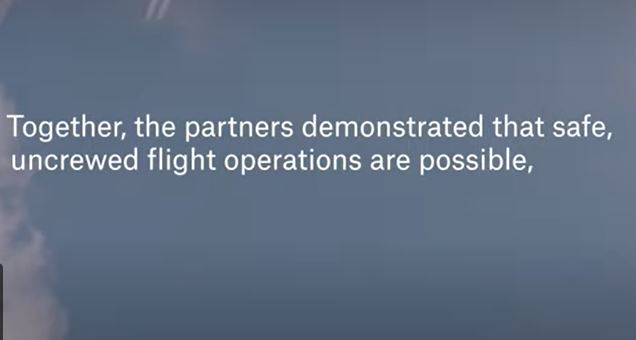
A consortium of aviation companies has completed a “first-of-its-kind” trial, including a series of test flights of a remotely piloted aircraft (RPA) aimed at evaluating the operational integration of uncrewed aircraft flying beyond visual line of sight (BVLOS) into controlled airspace.
The test flights were part of Wisk’s multi-phased testing programme under the New Zealand Government’s Airspace Integration Trial Programme (AITP). This latest phase of testing involved multiple flights that took place between November 17 and December 1, 2023, which demonstrated that an RPA can be operated under instrument flight rules (IFR) in controlled airspace and integrated with regular crewed traffic. The flights took place at the Tāwhaki National Aerospace Centre at Kaitorete, involving take-offs, landings, and uncontrolled and controlled airspace navigation.
Led by Wisk Aero, the trials included the New Zealand Government and industry partners, including Insitu Pacific as the approved Remotely Piloted Aircraft (RPA) operator, the Civil Aviation Authority of New Zealand (CAA) as the regulatory observer and Part 102 approver, Airways New Zealand as the air navigation service provider alongside Airways International’s uncrewed traffic management (UTM) system AirShare, and indigenous-led aerospace venture, Tāwhaki, providing the flight testing site.
“The successful completion of these trial test flights in New Zealand demonstrates that safe, uncrewed flight operations are possible, today, in controlled airspace among other piloted aircraft,” said a consortium press release. “Through this trial program, the partnership has established a safe process for uncrewed aircraft to access controlled airspace and created a significant new understanding and capability for commercial autonomous flight operations.
“The trials offer key insights for regulators and industry players globally to facilitate further testing and inform rule-making.”
“The successful completion of this phase of testing demonstrates that it is possible to safely integrate autonomous aircraft into controlled airspace that is shared with piloted aircraft,” said Catherine MacGowan, Wisk’s Vice President of APAC and Air Operations. “The processes, data, and learnings from these trial flights will help shape the future of Advanced Air Mobility (AAM) and the broader aviation industry.”
Andrew Duggan, Managing Director of Insitu Pacific, said: “This series of flights, remotely-piloted by our Insitu Pacific operators, puts into action the significant planning and close collaboration we have undertaken to support Wisk, and their partners the NZ CAA and Airways NZ, in this evolutionary program. The successful demonstration serves as a foundation towards fielding a safe concept of operations for autonomous flight in non-segregated airspace into the future.”
Airways New Zealand’s Acting General Manager Air Traffic Services, James Evans, said: “Our purpose as New Zealand’s air navigation service provider is to keep our skies safe, today and tomorrow. We value the chance to work with an innovator like Wisk to help shape the future by supporting it to trial the safe integration of uncrewed aerial vehicles into our controlled airspace.”
Justine Whitfield, Head of Products (Digital) at Airways International, said: “It’s great to be part of this trial with Wisk and see Advanced Air Mobility flights in action in AirShare using the UTM digital ecosystem. This trial with AITP partners will generate learnings that help inform safe uncrewed aircraft airspace integration models.”
CAA’s Deputy Chief Executive, Aviation Safety, David Harrison, said: “CAA is committed to the safe and secure integration of emerging technologies into the civil aviation system in New Zealand. It’s a promising step forward for the whole sector that these trials have progressed safely, which is our number one priority.”
Tāwhaki CEO, Linda Falwasser, said: “We’re proud to support world-leading innovation to take flight from our Tāwhaki National Aerospace Centre at Kaitorete. It’s great to be working in partnership as part of the Airspace Integration Trials Programme to chart a path for an adaptive, exciting, sustainable future for aerospace transport.”
For more information
First-of-its-Kind Flight Trials Integrate Uncrewed Aircraft Into Controlled Airspace

